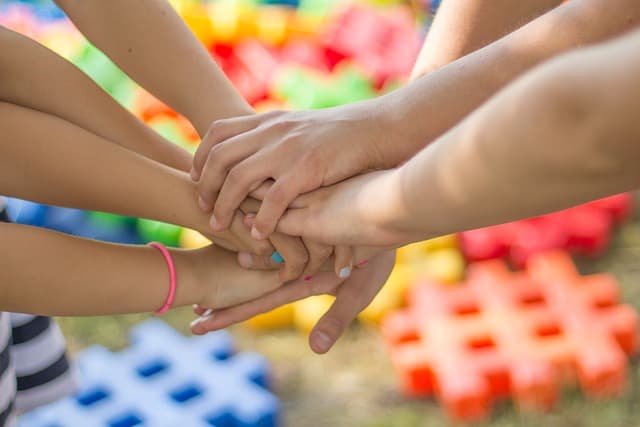Hey there, fellow educators! Ready to dive into a topic, such as social-emotional learning? It is a topic that is not only important but can also be heartwarming? But before we get started, let me share a little teaching joke to lighten the mood:
Why did the teacher bring a ladder to the art class?
Because they wanted to help their students “reach” for the stars and unleash their artistic potential! *Cue the eye-rolls*
Ha ha….but in all seriousness, a little laughter goes a long way in creating a positive and engaging classroom environment. Enjoy the humor and continue to inspire your students with your amazing teaching skills!
Now that we’ve had a good laugh, let’s delve into a crucial aspect of education: Social and Emotional Learning (SEL). As educators, we know that our students’ success goes beyond academic achievement. It’s about nurturing their hearts and minds, helping them develop social skills, emotional intelligence, and resilience. So, grab your metaphorical toolkit, because we’re about to explore the power of SEL in transforming our classrooms.
Understanding Social and Emotional Learning:
Picture this: A classroom where students not only excel academically but also thrive emotionally and socially. That’s the magic of Social and Emotional Learning (SEL). It encompasses the skills and competencies that enable students to understand and manage their emotions, show empathy, maintain positive relationships, and make responsible decisions. By fostering SEL, we create a safe and supportive environment that cultivates holistic growth.
Building Self-Awareness and Self-Management:
The journey of SEL begins with self-awareness and self-management. Encourage students to recognize and understand their emotions, strengths, and areas for growth. By developing self-management skills, they can regulate their emotions, set goals, and persevere through challenges. Imagine a student who takes a deep breath before tackling a difficult task or handles conflict with grace and empathy. That’s the power of SEL in action!
Fostering Social Awareness and Relationship Skills:
SEL extends beyond self-reflection to fostering social awareness and relationship skills. Students learn to appreciate diversity, respect others’ perspectives, and contribute positively to their communities. By engaging in collaborative activities and discussions, they develop effective communication, active listening, and problem-solving skills. Witnessing students work harmoniously, supporting one another, and valuing everyone’s contributions is a testament to the transformative nature of SEL.
Cultivating Responsible Decision-Making:
Life is all about choices, and teaching our students responsible decision-making is a valuable gift. SEL equips them with the ability to analyze situations, consider ethical implications, and make thoughtful choices. They learn to think critically, weigh the consequences, and act in alignment with their values. Picture a student who respectfully declines peer pressure, choosing a path that aligns with their personal convictions. That’s SEL empowering students to become confident decision-makers.
Implementing Social Emotional Learning in the Classroom:
Now, let’s roll up our sleeves and explore practical ways to incorporate SEL into our classrooms:
1. Morning Meetings:
Start each day with a circle time or morning meeting where students can share their thoughts, feelings, and experiences. This dedicated time fosters a sense of community and belonging among students. It provides an opportunity for them to express themselves, practice active listening, and develop empathy as they learn about their peers’ perspectives. Morning meetings set a positive tone for the day, promote positive relationships, and establish a supportive classroom environment that values open communication and mutual respect.

2. Mindfulness and Relaxation Techniques:
Introduce mindfulness exercises, deep breathing techniques, and relaxation activities to help students manage stress, focus their attention, and cultivate self-awareness. These practices allow students to become more present in the moment, enhancing their ability to regulate their emotions and maintain a calm state of mind. Mindfulness also promotes self-reflection, self-control, and the development of resilience, which are essential skills for managing challenging situations both inside and outside the classroom.
3. Cooperative Learning:
Design activities that foster collaboration, teamwork, and empathy. Encourage students to work together, appreciate diverse perspectives, and practice active listening. Cooperative learning not only enhances academic learning but also promotes social and emotional growth. By working collaboratively, students learn to value each other’s contributions, respect different viewpoints, and develop skills such as communication, compromise, and problem-solving. These experiences promote empathy, build positive relationships, and foster a sense of belonging and cooperation within the classroom.
4. Conflict Resolution:
Teach students effective strategies for resolving conflicts, such as active listening, compromise, and seeking win-win solutions. Empower them to express their emotions constructively and find peaceful resolutions. Conflict resolution skills equip students with the ability to manage interpersonal conflicts in a healthy and respectful manner. They learn to communicate assertively, listen empathetically, and find common ground. By fostering a supportive environment that encourages open dialogue and problem-solving, students develop a strong foundation for managing conflicts throughout their lives.
5. Literature and Discussions:
Choose literature that addresses social and emotional themes, allowing students to explore characters’ experiences, emotions, and moral dilemmas. Engage them in meaningful discussions to deepen their understanding and empathy. Literature provides a rich source of diverse perspectives and emotional journeys that resonate with students. By analyzing characters’ motivations, actions, and emotions, students develop empathy, critical thinking, and perspective-taking skills. Engaging in discussions allows them to express their thoughts, share insights, and learn from their peers’ interpretations, fostering a sense of empathy, understanding, and connection.
6. Service-Learning Projects:
Involve students in service-learning projects that allow them to make a positive impact on their communities. This hands-on experience enables students to apply their knowledge and skills in real-world settings. Through service, they develop empathy, compassion, and a sense of social responsibility. Engaging in meaningful projects, such as volunteering at local shelters or organizing fundraisers for charitable causes, exposes students to different social issues and helps them understand the importance of giving back. Service-learning projects cultivate empathy, deepen their understanding of community needs, and instill a sense of purpose and civic engagement.
7. Reflection and Goal Setting:
Integrate regular reflection activities where students can assess their own social and emotional growth. Encourage them to set goals for further development and track their progress. Reflection provides students with the opportunity to evaluate their actions, emotions, and relationships. It cultivates self-awareness, self-evaluation, and self-regulation skills. By setting goals, students develop a growth mindset and a sense of ownership over their own learning and personal development. Regular reflection and goal setting empower students to take charge of their social and emotional growth, fostering a sense of agency and continuous improvement.
8. Role Modeling:
As educators, we play a vital role in modeling SEL skills and behaviors. Display empathy, active listening , and respect in our interactions with students and colleagues. Our actions speak louder than words, and students observe and emulate our behavior. When we model SEL skills, such as effectively managing our own emotions, resolving conflicts respectfully, and demonstrating empathy towards others, we create a positive and inclusive classroom culture. By consistently modeling SEL principles, we provide students with real-life examples of how to navigate social and emotional situations. This helps them internalize these skills and apply them in their own lives. Additionally, as role models, we can openly discuss our own challenges and growth, showing students that it is natural to experience a range of emotions and that personal development is a lifelong journey.
Incorporating these strategies into our teaching practices enables us to create a holistic learning environment that nurtures students’ social and emotional well-being. By implementing morning meetings, mindfulness activities, cooperative learning, conflict resolution practices, literature discussions, service-learning projects, reflection exercises, and positive role modeling, we foster the development of essential SEL skills. These skills not only enhance students’ academic performance but also equip them with the emotional intelligence, resilience, and interpersonal skills needed for success in all areas of their lives.
To Conclude:
Remember, every interaction and activity in the classroom is an opportunity to cultivate social and emotional growth. By consciously integrating SEL into our teaching practices, we create an environment where students feel seen, valued, and supported. So, let’s embrace the power of Social and Emotional Learning, leading the way in empowering our students to become compassionate, self-aware, and emotionally intelligent individuals. Together, we can make a lasting impact on their lives and help shape a more empathetic and harmonious society.


